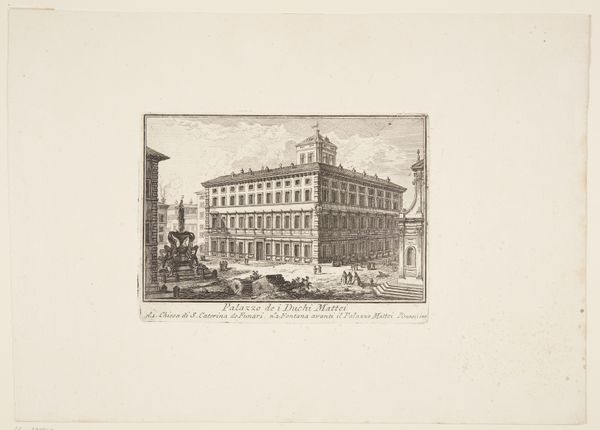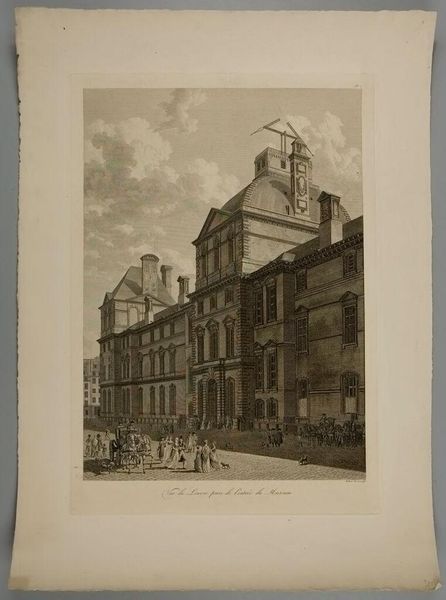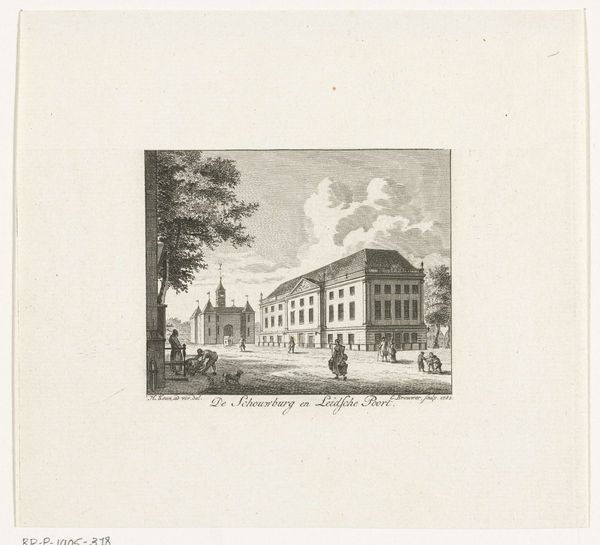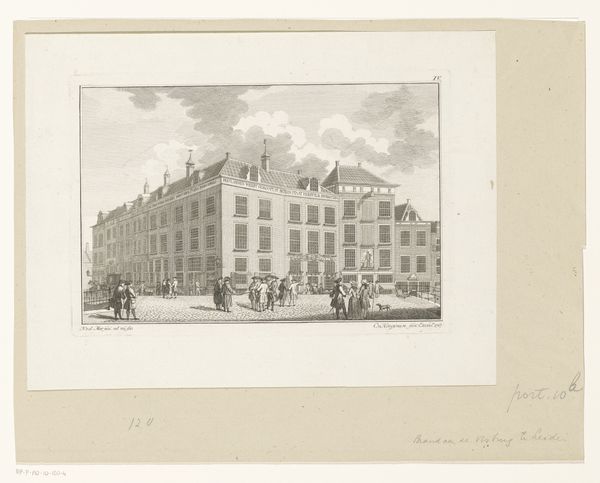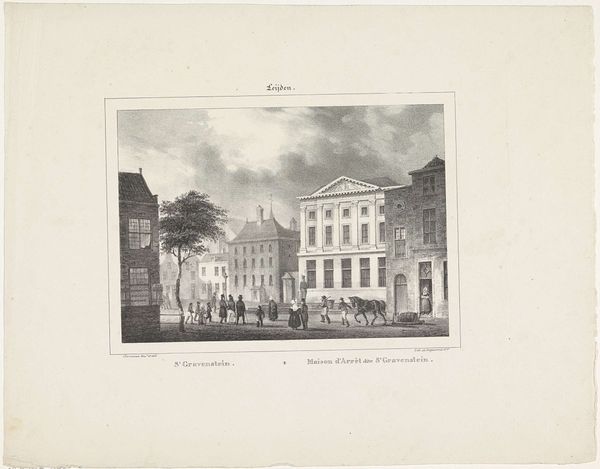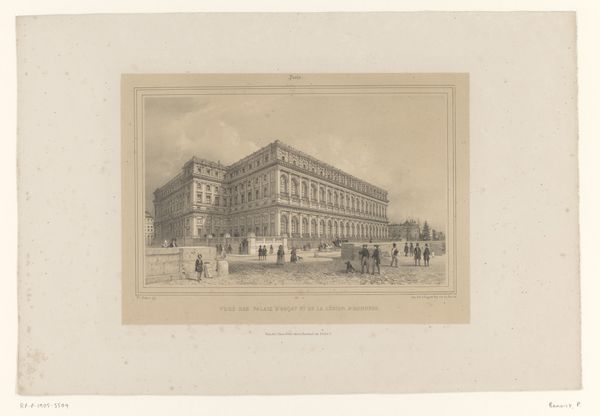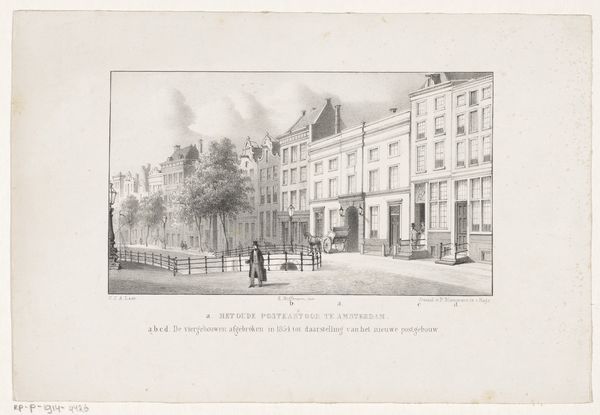
drawing, paper, pencil
#
drawing
#
paper
#
pencil
#
cityscape
#
realism
Dimensions: height 365 mm, width 545 mm
Copyright: Rijks Museum: Open Domain
Curator: Hendrik Wilhelmus Last's pencil drawing, "Gezicht op Museum Boijmans te Rotterdam, 1854", captures the museum in a serene, almost unassuming light. What strikes you initially? Editor: There's a sense of quiet dignity, an orderliness in the lines that gives it a very institutional and structured feel. It is rigid and stoic; it makes me wonder about who had access, and what the social expectations would have been within such an environment. Curator: I'm fascinated by how buildings become vessels of collective memory, reflecting cultural values through their architecture. The Boijmans Museum, here rendered with such detail, signifies not just art but civic pride. The realism employed highlights how this civic institution presents itself to the local residents. Editor: Right, it projects that 19th-century idea of progress and enlightenment. It reminds me a little of similar temples of culture in other parts of Europe that I've seen, built in ways that visually reinforced notions of European cultural superiority, though, of course, access would have been limited. It almost resembles the architecture of a prison or large military headquarters of the time, as if suggesting who could benefit from it. Curator: Absolutely. And thinking about Rotterdam then, a burgeoning port city, the museum served as a landmark in a society grappling with identity, class, and industrialization. Its position physically as well as socially matters to residents of Rotterdam and how they viewed this city as their own. Editor: I can also't help but notice the limited colour palette—almost monotone, suggesting, perhaps, a kind of somber seriousness but a grounded aesthetic that speaks to an earnest commitment to education and knowledge. What an exciting opportunity to consider how identity is crafted. Curator: Indeed, its restrained tones convey both prestige and austerity. Thinking of the people represented as small figures surrounding the image, their presence contextualizes this civic structure as a backdrop to their day to day existences in a burgeoning commercial center. Editor: Looking closely, the meticulous lines used to construct this visual archive certainly reveal Last’s careful observation, leaving us, today, with a glimpse into that historical moment, and I wonder what this might tell us about power relations within the local system. Curator: By highlighting not only the physical attributes, but also the broader historical implications behind an understated image of the Rotterdam cultural mecca, we hope to continue sparking questions and insight. Editor: I agree; seeing it as an archive certainly opens new pathways toward social exploration.
Comments
No comments
Be the first to comment and join the conversation on the ultimate creative platform.
